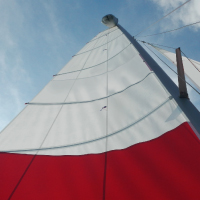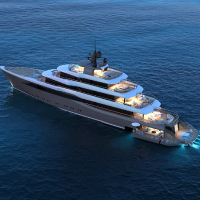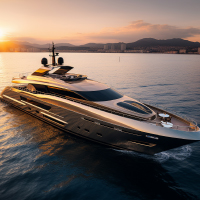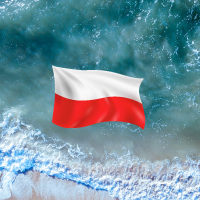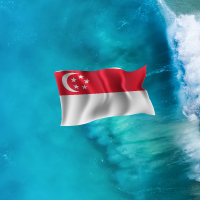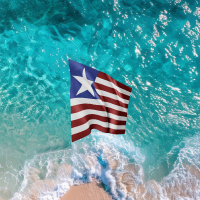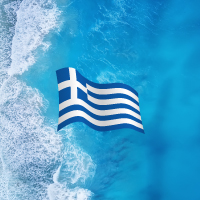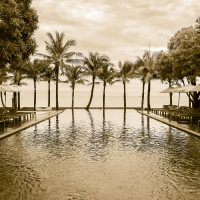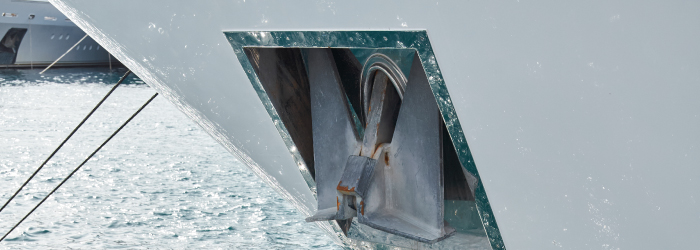
Recommended contact person
The Paris and Tokyo Memoranda of Understanding (MoUs) on Port State Control (PSC) are fundamental international agreements designed to enhance maritime safety, environmental protection, and working conditions aboard ships.
These MoUs establish frameworks for the inspection of foreign ships in national ports, ensuring compliance with international conventions. This analysis explores the roles, significance, establishment, classification frequencies, and binding nature of these MoUs, providing a comprehensive understanding of their impact on global maritime operations.
Establishment and Historical Background
Paris MoU
The Paris MoU was established in 1982 as a response to a series of maritime disasters in the 1970s, notably the Amoco Cadiz oil spill. The need for a robust mechanism to ensure compliance with international maritime standards became evident. The MoU was initially signed by 14 European countries, expanding over time to include 28 member states from Europe and the North Atlantic basin. The Paris MoU aims to eliminate substandard shipping through a harmonized system of port state control.
Tokyo MoU
The Tokyo MoU was established in 1993, drawing inspiration from the success of the Paris MoU. It was formed to address the unique challenges faced by the Asia-Pacific region, a rapidly growing hub for global maritime traffic. The Tokyo MoU encompasses 22 member authorities from the Asia-Pacific region, aiming to promote maritime safety, security, and environmental protection.
Role and Significance
Enhancing Maritime Safety
Both MoUs play a crucial role in enhancing maritime safety by ensuring that ships comply with international conventions, such as the International Convention for the Safety of Life at Sea (SOLAS), the International Convention for the Prevention of Pollution from Ships (MARPOL), and the International Convention on Standards of Training, Certification, and Watchkeeping for Seafarers (STCW). Regular inspections and detentions of non-compliant vessels prevent accidents and environmental disasters.
Environmental Protection
By enforcing compliance with MARPOL and other environmental regulations, the MoUs significantly contribute to reducing marine pollution. Ships are inspected for adherence to waste management protocols, emissions standards, and other environmental safeguards, ensuring that maritime operations do not harm the marine ecosystem.
Improving Working Conditions
The MoUs also emphasize the welfare of seafarers by enforcing the Maritime Labour Convention (MLC), which sets standards for working and living conditions aboard ships. Inspections ensure that seafarers have adequate accommodation, fair wages, and safe working conditions, thereby promoting their well-being and reducing the risk of human error due to fatigue or poor conditions.
Harmonization of Standards
One of the significant achievements of the MoUs is the harmonization of port state control procedures across member states. This uniformity reduces the administrative burden on shipping companies and ensures that inspections are consistent and effective, regardless of the port of call.
Classification Frequencies and Inspection Regimes
Paris MoU Inspection Regime
The Paris MoU operates a risk-based inspection regime, known as the New Inspection Regime (NIR), which came into effect in 2011. Ships are categorized based on their risk profile, which considers factors such as the ship’s age, flag, type, performance of the company that manages the vessel and history of deficiencies. High-risk ships are inspected more frequently, while low-risk ships benefit from fewer inspections. The NIR includes two categories of inspection, a periodic and an additional inspection. The NIR aims to allocate inspection resources efficiently, focusing on ships that pose the greatest risk.
- Annual Review: The Paris MoU conducts an annual review of the inspection results and the effectiveness of its risk-based inspection regime. During this review, the classification criteria and risk factors are assessed to ensure they remain relevant and effective.
- Data-Driven Adjustments: Adjustments to the classification system can be made based on the analysis of inspection data. This ensures that the risk profiles are based on the most current information about ship performance, flag state performance, and other relevant factors.
- Periodic Audits: Member states undergo periodic audits to ensure that they are implementing the MoU’s provisions consistently and effectively. Findings from these audits can lead to adjustments in classification criteria.
Tokyo MoU Inspection Regime
Similarly, the Tokyo MoU employs a risk-based inspection regime, referred to as the Ship Risk Profile (SRP). The SRP evaluates ships based on criteria such as ship type, flag state performance, company performance, and past inspection records. High-risk ships are subject to more frequent inspections, while low-risk ships enjoy reduced inspection frequencies. This approach ensures that inspection efforts are concentrated on ships that are more likely to have deficiencies.
- Annual Evaluation: The Tokyo MoU conducts an annual evaluation of its inspection results and the performance of its classification system. This evaluation involves analyzing inspection data, trends in deficiencies, and the performance of flag states and recognized organizations.
- Data-Driven Updates: Based on the annual evaluation, the Tokyo MoU may implement data-driven updates to the SRP. These updates ensure that the classification system accurately reflects the current risk profiles of ships operating in the Asia-Pacific region.
- Member State Feedback: Feedback from member states is also a critical component in the review process. Member states report on their inspection experiences and any challenges faced, contributing to a collective effort to improve the classification system.
White, Grey, and Black Lists
Purpose and Criteria
The Paris and Tokyo MoUs utilize a system of White, Grey, and Black Lists to categorize flag states based on their performance. This system helps to identify which flags are associated with higher risks and which maintain good safety records.
- White List: Flags on the White List are considered to have a consistently high level of compliance with international standards. These flags represent low-risk ships, which are subject to fewer inspections. Ships under White List flags are less likely to be detained and generally enjoy a positive reputation.
- Grey List: The Grey List includes flags that show an average performance. Ships under these flags are subject to a standard level of scrutiny. The Grey List acts as a transitional category for flags that are improving their performance or those that have slightly deteriorated but are not high-risk.
- Black List: Flags on the Black List are associated with poor performance and a high number of deficiencies and detentions. Ships under Black List flags are inspected more frequently and face a higher likelihood of detention. The Black List serves as a warning to shipowners and operators about the risks associated with these flags.
Frequency of Updates
The White, Grey, and Black Lists are updated annually based on the analysis of inspection data from the previous year. The criteria for categorization include the number of inspections, the number of detentions, and the severity of deficiencies found.
- Annual Publication: The lists are published annually, providing a transparent overview of flag state performance. This publication helps shipping companies make informed decisions about the flags they choose for their vessels.
- Performance Monitoring: Continuous monitoring of flag state performance ensures that the lists reflect current realities. Flags that improve their performance can move up from the Grey or Black List to the White List, while those that deteriorate can move down.
- Transparency and Accountability: The annual updates promote transparency and accountability among flag states. Poor-performing flags are incentivized to improve their standards to avoid the negative implications of being on the Grey or Black List.
Binding Nature and Legal Implications
Non-binding Agreements
While both the Paris and Tokyo MoUs are non-binding agreements, they carry significant weight due to the commitment of member states to uphold their principles. The non-binding nature means that the MoUs do not have the force of international law, but member states agree to implement their provisions through national legislation and regulations.
National Implementation
Member states incorporate the MoU provisions into their national legal frameworks, making compliance mandatory for ships operating under their jurisdiction. This national implementation ensures that the MoUs’ standards are enforced consistently, despite their non-binding nature.
International Cooperation
The MoUs promote international cooperation and information sharing among member states. This collaboration enhances the effectiveness of port state control by enabling inspectors to access up-to-date information on ship inspections, detentions, and deficiencies. The shared database allows for a coordinated approach to maritime safety and environmental protection.
Impact on the Maritime Industry
Compliance Incentives
The risk-based inspection regimes of the Paris and Tokyo MoUs create strong incentives for shipowners and operators to maintain high standards of safety and environmental compliance. Ships with poor inspection records face increased scrutiny, potential detentions, and reputational damage. Conversely, compliant ships benefit from fewer inspections and a positive reputation, which can attract business.
Detentions and Penalties
Non-compliance with MoU standards can result in ship detentions, leading to significant financial losses for shipowners due to delayed schedules and repair costs. Detained ships must rectify deficiencies before being allowed to continue operations, ensuring that substandard ships are promptly brought up to acceptable standards.
Industry Standards
The MoUs have set a benchmark for industry standards, encouraging continuous improvement in ship safety and environmental performance. Shipping companies strive to meet these standards to avoid penalties and ensure smooth operations, leading to overall enhancements in the quality of the global fleet.
Challenges and Criticisms
Regional Disparities
One of the criticisms of the MoUs is the potential for regional disparities in enforcement. While the MoUs aim for harmonization, differences in inspection practices, resources, and priorities among member states can lead to inconsistencies. Efforts to standardize procedures and training are ongoing to address these disparities.
Administrative Burden
The risk-based inspection regimes, while effective, can create an administrative burden for shipping companies. Maintaining compliance with varying national regulations, keeping up with inspection schedules, and managing documentation require significant resources. However, the benefits of compliance generally outweigh these challenges.
Balancing Inspections and Trade Efficiency
Striking a balance between rigorous inspections and the efficient flow of maritime trade is an ongoing challenge. Excessive inspections can cause delays and disrupt trade, while insufficient inspections can compromise safety and environmental protection. The MoUs continually seek to optimize this balance through risk-based approaches and technological advancements.
Future Directions
Technological Advancements
The future of port state control under the Paris and Tokyo MoUs will likely be shaped by technological advancements. The use of digital tools, data analytics, and remote inspection technologies can enhance the efficiency and effectiveness of inspections. Real-time data sharing and predictive analytics can help identify high-risk ships and allocate resources more effectively.
Strengthening International Collaboration
Continued strengthening of international collaboration will be essential for the MoUs’ success. Enhanced information sharing, joint inspections, and coordinated responses to emerging threats will ensure that port state control remains robust and adaptive to new challenges.
Addressing Emerging Issues
The maritime industry faces emerging issues such as climate change, cybersecurity, and evolving regulatory frameworks. The MoUs will need to adapt to these challenges by updating inspection criteria, incorporating new standards, and fostering innovation in maritime safety and environmental protection.
Conclusion
The Paris and Tokyo MoUs on Port State Control have played a transformative role in enhancing maritime safety, environmental protection, and working conditions aboard ships. Through their risk-based inspection regimes, international collaboration, and commitment to harmonized standards, the MoUs have set a benchmark for the global maritime industry. While challenges remain, the MoUs continue to evolve, driven by technological advancements and a shared commitment to a safer and more sustainable maritime future. Their impact on the maritime industry is profound, promoting compliance, improving standards, and safeguarding the world’s oceans and seafarers.
For all enquiries please contact our team of experts at agp@agplaw.com
AGPLAW’s Global Ship Registration Services
The information provided by AGPLAW | A.G. Paphitis & Co. LLC is for general informational purposes only and should not be construed as professional or formal legal advice. You should not act or refrain from acting based on any information provided above without obtaining legal or other professional advice.








